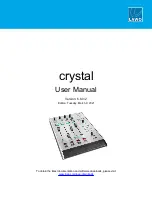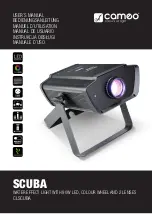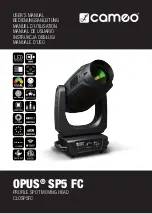
6
5
Tighten the thumbscrews.
F
IGURE
9
Installing the Probe
6
Check the position of the sample tubing.
Always position the sample transfer tubing so that it does not pull on the probe. The tubing
should naturally curve away from the probe so that it won't rub or get caught. Be sure to
check that the tubing will not be stretched and will not snag on an obstacle when the probe is
moved to the far corner sample positions.
Connecting the Rinse Station
The rinse station is mounted at the left end of the autosampler.
For coolants samples, the rinse solution is typically deionized water or a dilute acid rinse
such as 1% HNO
3
. For oils samples, the rinse solution is typically a solution from the
kerosene family.
The inlet of the rinse station is at the bottom of the rinse station. The rinse solution flows
from the bottom to the top.
Waste Rinse Solution
In most cases, rinse solution will be “recycled” by returning it to the rinse solution bottle. If
necessary, rinse solution can be pulled from a fresh bottle and used solution drained to a
waste container.
Remember to label the waste container according to your laboratory policy
and local regulations.
CAUTION
Ensure that the tubing outlet is placed so that it will remain above the surface of
the liquid in the waste container. If the end of the tube is immersed, the waste
solution might back up and overflow.
Tubing Considerations
Verify that the supplied
tubing material is compatible with the rinse solution you are using.
Clear Superthane
®
tubing is supplied (except for the peristaltic pump tubing cartridge).
Refer to the
Oils 7400 Spare Parts and Accessories Catalog
or contact CETAC if you need
different tubing material.
The fittings on the rinse station and on the peristaltic pump use ⅛ inch (3.2mm) ID tubing.
Carefully press the tubing straight on to the fittings to avoid breaking the fittings. If you find
it difficult to get a good connection to the rinse station, remove the rinse station and press






























